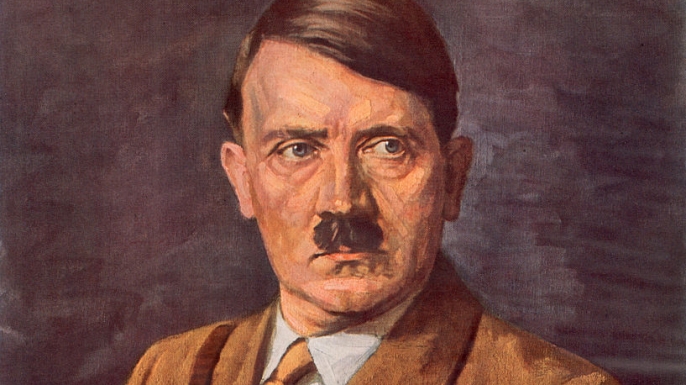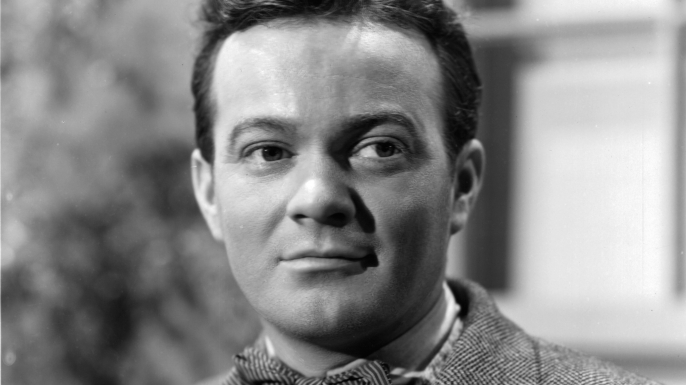
Jesus Christ
 When British pop artist Sir Peter Blake and his then-wife Jann Haworth developed the idea for a photomontage of famous people to grace the cover of “Sgt. Pepper,” Paul McCartney, George Harrison and John Lennon gave them a list of possible figures to include. (George Martin, who produced most of the group’s hits, recounted that Ringo Starr said, “You carry on, fine,” and never made a list.) “John, of course, got far-out, as usual. He put Hitler and Jesus in,” recalled McCartney in an interview published in Paul Du Noyer’s book “Conversations with McCartney.” Lennon’s picks came just months after he told a London Evening Standard interviewer that the Beatles were “more popular than Jesus now.” The quote sparked little notice when originally printed in Great Britain, but it created a big stir in the United States during the summer of 1966 when it was reprinted in the American teenage magazine Datebook. Disc jockeys who thought the comment sacrilegious refused to play Beatles songs, and some radio stations even burned Beatles records and memorabilia in bonfires. Although Lennon was willing to resurrect the controversy for the album cover, it was decided to avoid the subject altogether and no cardboard cut-out of Jesus was commissioned.
When British pop artist Sir Peter Blake and his then-wife Jann Haworth developed the idea for a photomontage of famous people to grace the cover of “Sgt. Pepper,” Paul McCartney, George Harrison and John Lennon gave them a list of possible figures to include. (George Martin, who produced most of the group’s hits, recounted that Ringo Starr said, “You carry on, fine,” and never made a list.) “John, of course, got far-out, as usual. He put Hitler and Jesus in,” recalled McCartney in an interview published in Paul Du Noyer’s book “Conversations with McCartney.” Lennon’s picks came just months after he told a London Evening Standard interviewer that the Beatles were “more popular than Jesus now.” The quote sparked little notice when originally printed in Great Britain, but it created a big stir in the United States during the summer of 1966 when it was reprinted in the American teenage magazine Datebook. Disc jockeys who thought the comment sacrilegious refused to play Beatles songs, and some radio stations even burned Beatles records and memorabilia in bonfires. Although Lennon was willing to resurrect the controversy for the album cover, it was decided to avoid the subject altogether and no cardboard cut-out of Jesus was commissioned.
Adolf Hitler

While Martin wrote in his book “With a Little Help from My Friends: The Making of Sgt. Pepper” that Lennon included Hitler “just to be a naughty boy,” the image of the Nazi leader very nearly made the final cut. “Hitler and Jesus were the controversial ones, and after what John said about Jesus we decided not to go ahead with him—but we did make up the image of Hitler,” Blake told London’s Independent newspaper in 2007. “If you look at the photographs of the out-takes, you can see the Hitler image in the studio.” While some snapshots of the photo shoot for the album cover showed the Hitler cut-out off to the side, Blake told the Independent that the Fuhrer was actually in the final cover art but obscured by the Beatles themselves. “Hitler was in fact covered up behind the band,” Blake said. “He is on there—you just can’t see him.”
Mohandas Gandhi

Lennon’s list also included Gandhi as one of the suggested faces for the “Sgt. Pepper” cover. A cut-out of the Indian independence leader was included in the initial photo shoot, but Sir Joseph Lockwood, chairman of the record label EMI, was concerned that Gandhi’s presence on the cover could be considered sacrilegious in India and jeopardize album sales there. “Take Gandhi out. We need the Indian market. If we show Gandhi standing around with Sonny Liston and Diana Dors, they’ll never forgive us in India,” Lockwood told McCartney according to Philip Norman’s book “Shout! The Beatles in Their Generation.” Honoring Lockwood’s wishes, a strategically positioned palm tree frond was used to cover up Gandhi’s image on the right side of the photomontage.
Leo Gorcey

When Lockwood initially saw the concept for the cover of “Sgt. Pepper,” he rejected the design because he feared living celebrities would object to the use of their images and sue the record company. Lockwood finally relented as long as the Beatles obtained written permissions from every living person for the use of their likenesses on the cover art and indemnified the record company for 20 million pounds to guard against lawsuits. When the Beatles contacted the celebrities for permission, only one asked for compensation—actor Leo Gorcey, who as a child starred as the leader of the Dead End Kids before appearing in the Bowery Boys movies in the 1940s and 1950s. Gorcey, who asked for $500 for the use of his image, had originally appeared in the back row on the album cover to the left of fellow Bowery Boy Huntz Hall, but the Beatles simply purged him from the final version and painted over his image with blue sky. “We thought, ‘You know what, we’ve got enough people on here!’” McCartney recollected of the group’s reaction to Gorcey’s demand in an interview on his web site.
Elvis Presley
 While the image of musical contemporary Bob Dylan appears on the “Sgt. Pepper” cover along with a Shirley Temple doll wearing a sweater that says “Welcome the Rolling Stones,” there is no reference to one of the Beatles’ biggest musical influences—Elvis Presley. “I’m an Elvis fan,” Lennon once said in a television interview, “because it was Elvis that really got me out of Liverpool.” The Beatles placed Presley on such a high pedestal that they didn’t want him to be just another face in the crowd on the “Sgt. Pepper” cover. “Elvis was too important and too far above the rest even to mention,” said McCartney. “He was more than a pop singer. He was Elvis the King.”
While the image of musical contemporary Bob Dylan appears on the “Sgt. Pepper” cover along with a Shirley Temple doll wearing a sweater that says “Welcome the Rolling Stones,” there is no reference to one of the Beatles’ biggest musical influences—Elvis Presley. “I’m an Elvis fan,” Lennon once said in a television interview, “because it was Elvis that really got me out of Liverpool.” The Beatles placed Presley on such a high pedestal that they didn’t want him to be just another face in the crowd on the “Sgt. Pepper” cover. “Elvis was too important and too far above the rest even to mention,” said McCartney. “He was more than a pop singer. He was Elvis the King.”